Вы здесь
Republican Book Museum in Almaty.
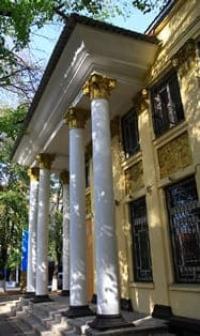
Culture and Religion on Great Silk Road.
"One of the first large collections received by the museum was the extensive personal library and archive of Abish Zhirenchin, a famous scholar of Abai studies, one of the first researchers of the Kazakh book of the pre-Soviet period."
Zhumagyz Shalgynbay. "From the history of the acquisition of the Republican Book Museum fund." M.O. Auezov Institute of Literature and Art,
International Center for Rapprochement of Cultures in Almaty.
International Center for Rapprochement of Cultures (former Republican Book Museum) is located at an altitude of 841 meters above sea level, located on Kabanbay Batyr Street, 94, on corner with D. Kunayev Street, in Medeu district of Almaty.
The museum was founded in 1977. Its exhibitions show the history of the development of Kazakh writing, book printing and modern publications in Kazakhstan. The museum presents more than 20 thousand copies, including rare books in the original, manuscripts, modern periodicals, ancient drawings, booklets, emblems, maps.
The Republican Book Museum was opened in October 1978 on the initiative of the Chairman of the State Committee for Publishing and Printing of the Kazakh SSR Sh.R. E. Eleukenov.
History of Republican Book Museum.
The Republican Book Museum is a former museum of the history of literature and book publishing in Kazakhstan and in the city of Alma-Ata. It was located in the former building of the Ministry of Grain Products and Feed Industry of the Kazakh SSR.
In 1935, according to the design of the architect Vladimir A. Tverdokhlebov, a building was built for the Ministry of Social Security (later the Ministry of Grain Products and Feed Industry of the Kazakh SSR). The sculptor of the project is Ivan Bogumilovich Vakhek, who served an exile in Almaty.
Architecture of building of Republican Book Museum.
The structure is a two-story brick L-shaped building. The entrance group in the form of a portico is arranged in the corner of the building. The main volume of the structure is a blind rusticated surface, complemented by shallow rectangular niches.
The interfloor space is decorated with a horizontal belt of a relief panel with scenes of socialist agricultural life. The two-color solution of the facade and the use of classical elements in the decor of the building give it a special figurative expressiveness.
In the eastern wing of the building, at the level of the windows of the first floor, in a shallow rectangular niche, there is a fountain in the shape of a lion's head. During its existence, various institutions and establishments were located in the building: the Kazpivo trust, as well as the "model store and summer pavilion of soft drinks and ice cream" opened with it, the Kazkhleb administration, as well as a store with it, and others.
The idea of creating a museum arose after he visited the Book Museum in Kyiv. K.K. was appointed the first director. Gilmanov, a historian by education, who began to form the first team of the museum and build the collections and exposition.
We must give credit where credit is due - a small museum team (9 people) in less than a year created a fairly decent exposition, which existed until 1981. The museum staff performed a variety of work - wrote thematic and thematic-exposition plans, conducted excursions, went on business trips to all regions of the republic.
For example, from a business trip to the Kyzyl-Orda region, Zh. Suleimenov and E. Bozheev brought back a unique collection of oriental handwritten books of the XVIIIth - XIXth centuries (46 titles), found in the attic of one of the houses in the region.
In the regional center, in the library of a boarding school, they found about 700 rare editions of St. Petersburg and Moscow publishing houses of the XIXth century. Among them are a luxurious folio, one of the first volumes of the "Imperial Hunt", gift editions of the works of A.S. Pushkin, etc.
The 1970s-1980s and subsequent years became a time of intensive formation of the museum, and, in particular, rare collection, which now consists of a unique collection of manuscript books (mainly of Central Asian origin), lithographs (Indian and Central Asian), early printed editions (XVIIth century) and book editions of the XVIIIth - first half of the XXth century of various origins and subjects.
Primary attention was paid to collecting Kazakh books of the pre-revolutionary period and publications of the first decades of Soviet power. Later, when it was decided to demonstrate the successes of Soviet book publishing, they established the acquisition of products from the republican publishing houses operating at that time.
We must pay tribute to the management of the State Committee for Publishing, which paid the most serious attention to the development of the museum, which was part of its structure until the 1990s and received sufficient funding to purchase items necessary for the formation of fund collections with virtually no restrictions.
This financial opportunity allowed the museum to acquire several large (about 4,000 titles) personal collections of famous scientists in the republic. One of the first large collections received by the museum was the extensive personal library and archive of Abish Zhirenchin, a well-known scholar and Abaiologist, one of the first researchers of the Kazakh book of the pre-Soviet period.
Among the materials that came to the museum from its collection are the first edition of Abai Kunanbayev's poetry collection, published in St. Petersburg in 1909, Abai's family photo album, and books on local history published before the beginning of the 20th century in St. Petersburg, Moscow, Kazan and other Russian cities.
But the most valuable and, of course, rare item is a handwritten book with the text of the religious Muslim dastan "Zarkum", on the basis of which, apparently, a Kazakh book of the same name was printed in the pre-revolutionary period. The second very valuable and informative collection that came to the museum was the library-archive of the famous teacher, author of textbooks on Kazakh literature Shaikhy Karibayev.
Its richness and diversity reflect the breadth of the scholar-philologist's scientific interests: from the history of Kazakh literature and folklore to the history of local history of pre-revolutionary Kazakhstan. The collection was received by the museum in 1979, but a few years later, due to the enormous importance of the manuscripts from this collection, they were transferred for storage to the M.O. Auezov Institute of Literature and Art of the Academy of Sciences of the Kazakh SSR.
In the early 1980s, the museum purchased a very valuable collection of oriental manuscripts that belonged to the orientalist J. Karmysheva: 16 manuscripts from the 16th – 19th centuries, the most valuable of which is considered to be the “Kashgar History” of the XVIth century.
In search of rare books, the museum staff used all opportunities – acquaintances, personal connections. One of the permanent friends of the museum was the famous “Bukinist” store, whose director at that time was A.Ya. Sukhova. Thanks to her, unique printed publications were acquired, mainly from Russian printing houses of the XIXth century.
Another constant source of replenishment of the funds were the exchange and reserve funds of large libraries of the city, republic and even Russia. In the 1970s In the USSR, a campaign was carried out to centralize the library system.
As a result of the merger of libraries, hundreds of thousands of duplicate copies were discovered. Under the slogan of this campaign, libraries "liberated" their collections from "unnecessary", "morally obsolete" and dilapidated books. The museum managed to select from such heaps thousands of extremely rare books of the XIXth - XXth centuries, both in terms of content and printing, with magnificent illustrations, leather and embossed spines, and beautifully designed binding covers.
The remaining books went to waste paper. About 1,000 books of Russian fiction of the XIXth century came from the Omsk Regional Library - almost all the collected works of Russian writers of that time. There was an interesting story with the arrival of a magnificent collection of Kazakh publications from the 1920s - 1940s from Leningrad.
Its background in brief is as follows. As a postgraduate student at the All-Union Book Chamber, I took part in the All-Union Scientific Conference on Book Science in Moscow in 1984. My unofficial supervisor, Efim Abramovich Dinershtein, introduced me to E.K. Sagidova, who was then the head of the Department of Literature of the Peoples of the USSR at the M.E. Saltykov-Shchedrin State Public Library in Leningrad (now the Russian National Library). The department she headed was located on the Fontanka River embankment, where the periodicals hall is now located.
Due to the threat of flooding, the books of the entire collection were bundled and prepared for evacuation. Due to a lack of storage space, the library management was ready to transfer duplicate copies of the Soviet part of the Kazakh collection to our museum. Six months later, we received parcels from Leningrad with priceless cargo - over 3,000 books, brochures, instructions and other printed products from the 1920s - 1940s, in good condition: among them - books from "Tsentrizdat" (Moscow), in Kazakh (Arabic script), as well as books from the first Kazakh publishing houses: KIHL (Kazakh Publishing House of Fiction), Kazgosizdat, Kazkraiizdat, KazFAN and others. I remember the original children's books published by KIHL, folios with the works of Dzhambul and Abai.
As it turned out later, even the Book Chamber of the Republic did not have many of the publications sent, and we had to, by order of the leadership of the State Committee on Publishing, transfer them to the Chamber. According to the initial concept of the museum, it was supposed to build exhibitions dedicated exclusively to the history of the Kazakh book and book publishing, and partly sections dedicated to the art of the book of modern times.
But as the museum collection was being completed, an idea appeared to show the history of Kazakh local history, research mainly by European, including Russian, scientists. The local history collection is still a particularly valuable part of the current museum collection.
It was formed surprisingly quickly. Some of the books came from private libraries, others were purchased over the course of two years from the second-hand book department of the Moscow House of Books (for this, it was only necessary to contact the store's management with an official letter).
Just listing the names of the authors of the books that came to the museum by cash on delivery gives an idea of the richness of the collection: P.I. Rychkov, A.I. Levshi, V.V. Velyaminov-Zernov, M. Venyukov, Fedchenko, N.A. Severcov, Sven Gedin, M.A. Terentyev, Plano Carpini, George Carrick, Richard Karutz, G.-F. Müller (Miller), I.I. Zavalishin, A.I. Dobrosmyslov, V.V. Grigoriev, N.I. Grodekov, G.E. Grum-Grzhimailo and dozens of other names. Thus, about 700 books arrived by mail from Moscow! In the mid-1990s, the museum was transferred to the system of the Ministry of Culture, and the situation changed for the worse.
There was no longer enough money for acquisitions, the building had not been renovated since 1981, the exhibition built in the early 1990s remains unchanged, there is no climate control, the manuscripts in the exhibition halls are drying out, and the storage, which was located in the building of the Publishing House, was completely moved to one of the workshops of the Book Factory, lit by uncurtained windows!
In short, there are problems that need to be solved immediately, otherwise we can ruin the unique collection that has become a national treasure! The way out of the current situation seems to be the transfer of the museum to the jurisdiction of the Almaty City Department of Culture.
We hope that this will help revive the life of the museum and involve it in the cycle of the city's cultural life. On November 10, 2010, a new State List of Historical and Cultural Monuments of Local Significance in Almaty was approved, at the same time as all previous decisions on this matter were declared invalid.
This resolution retained the status of a monument of local significance for the former building of the Ministry of Grain Products. The boundaries of the protected zones were approved in 2014.
Address of Republican Book Museum.
050010 Almaty, Kabanbai Batyr Street, 94, corner of Kunayev Street.
Phones:
+7 (727) 261‒20‒09
+7 (727) 261‒38‒21
Open: from 9.00 to 18.00
Lunch: from 13.00 to 14.00
Geographical coordinates of Republican Book Museum: N43°14'59 E76°57'04
Authority:
"From the history of the acquisition of the fund of the Republican Museum of Book" Zhumagiz Shalgynbay. Institute of Literature and Art named after M.O. Auezov, Almaty.
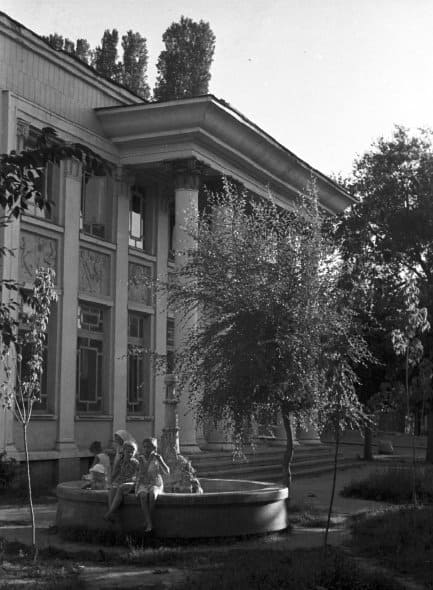
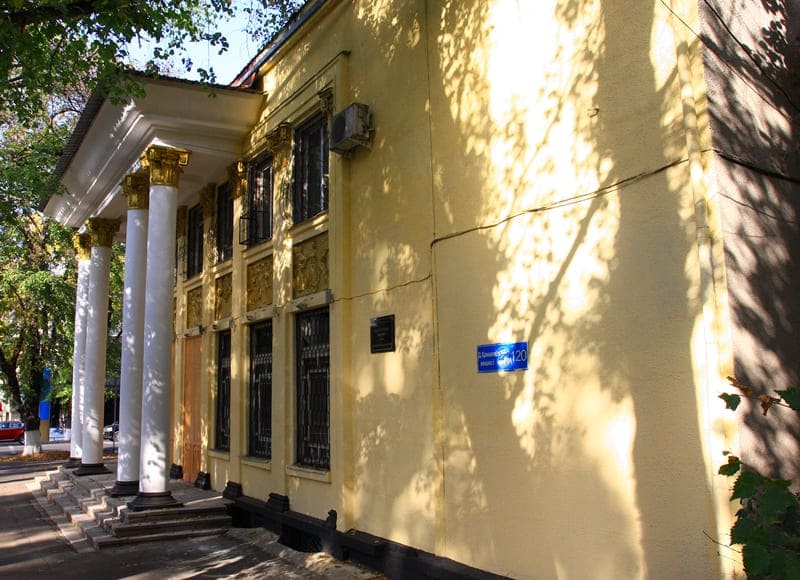
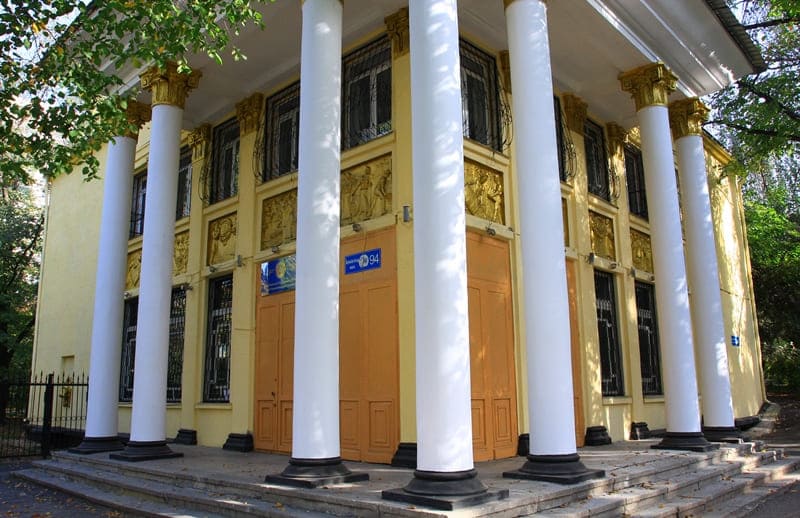
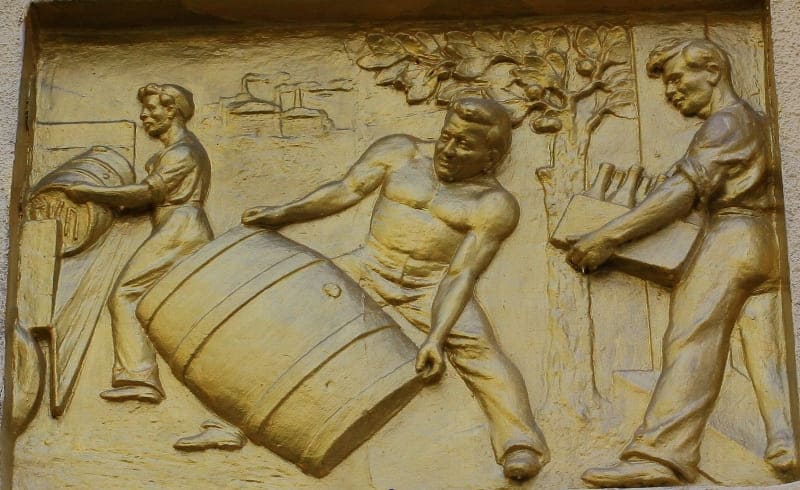
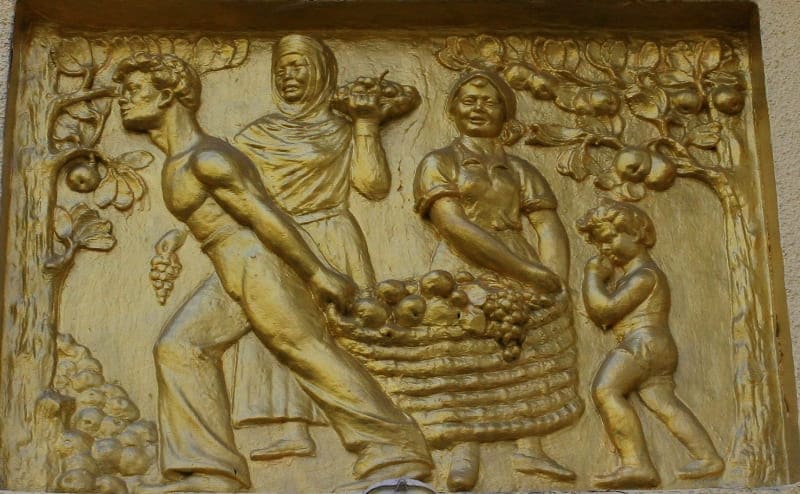
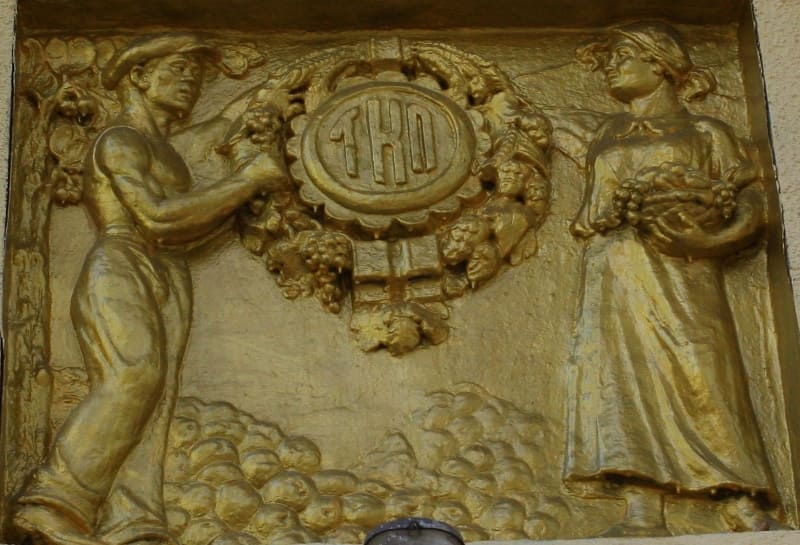
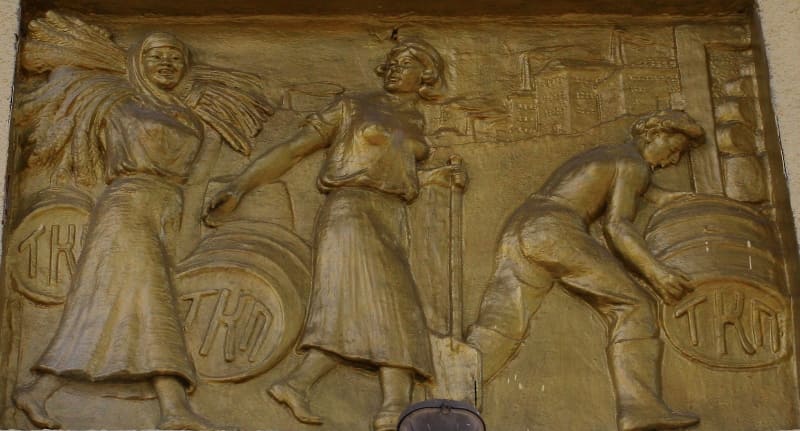
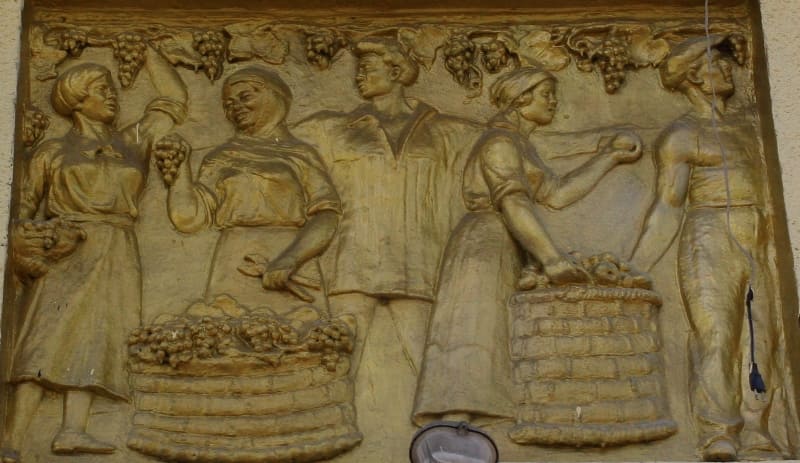
Ivan Bogumilovich Vakhek (1880, Prague - September 2, 1938, Alma-Ata) - Soviet sculptor of Czech origin. Professional activity is mostly connected with the design of Almaty in the 1930s, where Vakhek served his exile from 1932 until his execution. Victim of political terror in the USSR.
Born in Prague in 1880. Received secondary specialized art and humanitarian education. In 1902 he moved to Tbilisi, where he worked as a translator at the Czech consulate and at the same time taught Sokol gymnastics at the gymnasium. During his life in Tbilisi, he got married and started a family.
The couple had a daughter, Lyudmila. In 1932, Vakhek was accused of espionage. Sent into "wave exile" on the principle of "minus six", i.e. the opportunity to choose a place to serve his sentence, excluding the six largest cities of the USSR.
In Alma-Ata, he worked as a sculptor for the government of the Kazakh SSR. Moreover, he was one of the few specialists of this kind, and in the initial period almost the only one. As a result, he took part in almost all the new buildings of the city of that period, not only as a sculptor and designer, but sometimes as an architect.
On February 5, 1938, he was arrested again and convicted of participating in an anti-Soviet conspiracy under Article 58-6 of the Criminal Code of the RSFSR. The family was informed that he was exiled "to distant camps without the right to correspondence." In reality, he was sentenced to capital punishment.
On September 2, 1938, he was shot.
On October 17, 1957, he was rehabilitated by the Military Tribunal of the Transcaucasian Military District due to lack of evidence of a crime.
Lost works of Ivan Bogumilovich Vakhek.
1. Design of the Almaty 2 railway station. The ceiling painting, part of the reliefs of the Apple Picking bas-reliefs, and the Miner and Soldier sculptures have been lost.
2. The Kazkraisouz Canteen (Restaurant No. 1). Design of the facades and interiors of the building. The restaurant burned down in the 1950s.
3. The Palace of Culture, sculptures of the entrance group, The Woman Kolkhoz Worker and The Metallurgist.
4. The Palace of Culture, sculptural busts of cultural figures, scientists, and party leaders. Destroyed after the depicted figures were subjected to repression.
5. The building for the Ministry of Social Security (later the Ministry of Grain Products and Feed Industry of the Kazakh SSR) of the Kazpivo trust. The lion mascaron on the building of the Kazpivo trust. One finger on the right paw is missing, the paw itself was changed during restoration work to resemble part of the mane. Window sill panel on the building of the Kazpivo Trust with the logo (TKP).
Surviving works by Ivan Bogumilovich Vakhek.
1. Design of the Almaty 2 railway station. Relief figures depicting socialist life.
2. Exterior design of the Kazpivo Trust building. Namely: ten bas-relief window panels "The Past of the Kazakh People" and one lion mascaron.
3. Palace of Culture, two lion mascarons.
4. Exterior design of the school (now Grammar School No. 12), a building at the intersection of Kunayev and Bogenbay Batyr Streets - facade and three bas-relief window panels.
Authority:
https://ru.wikipedia.org/wiki/%D0%92%D0%B0%D1%85%D0%B5%D0%BA,_%D0%98%
Photos by:
Alexander Petrov.







